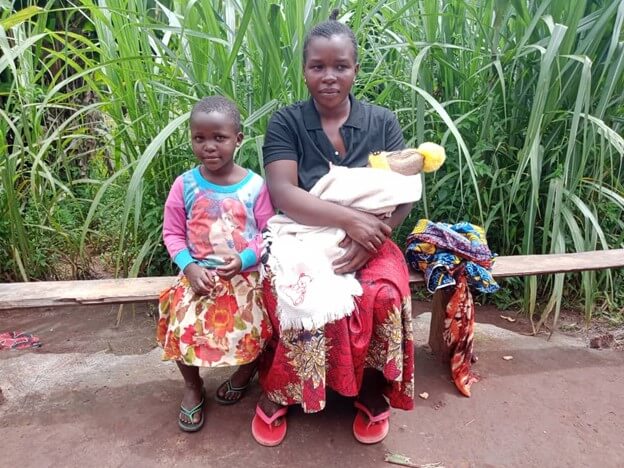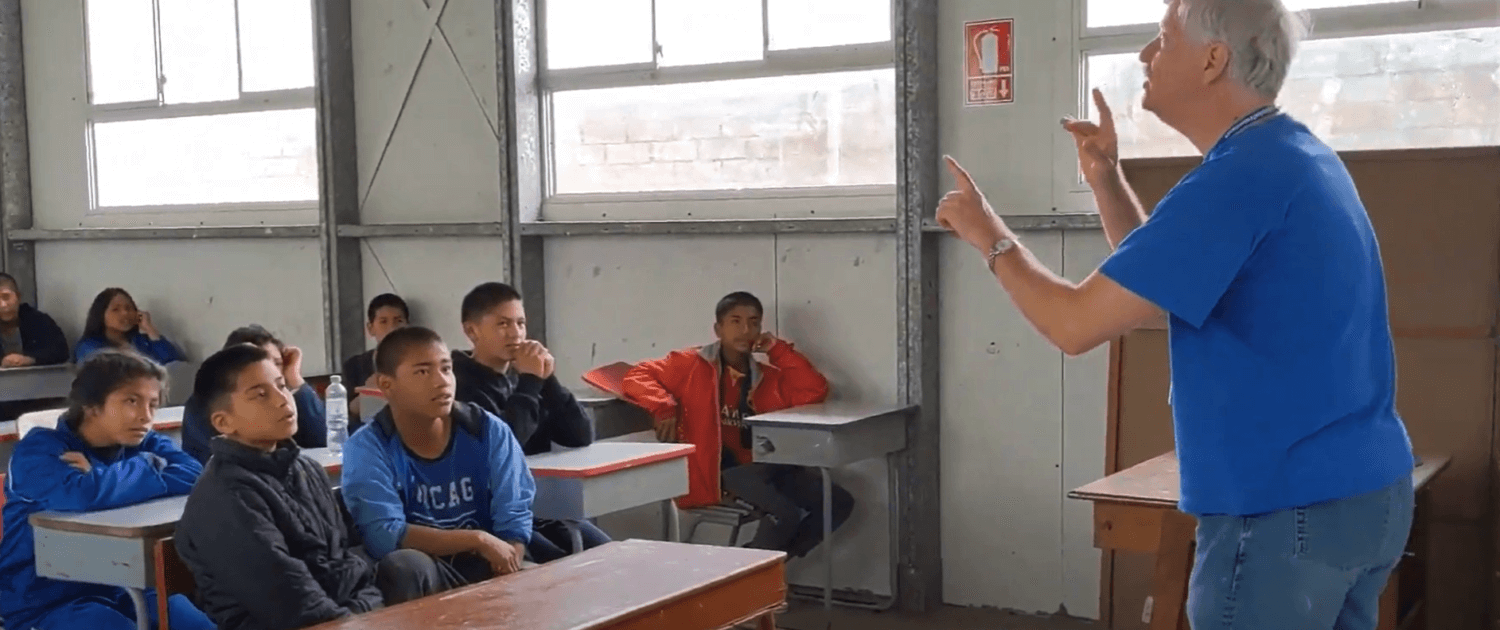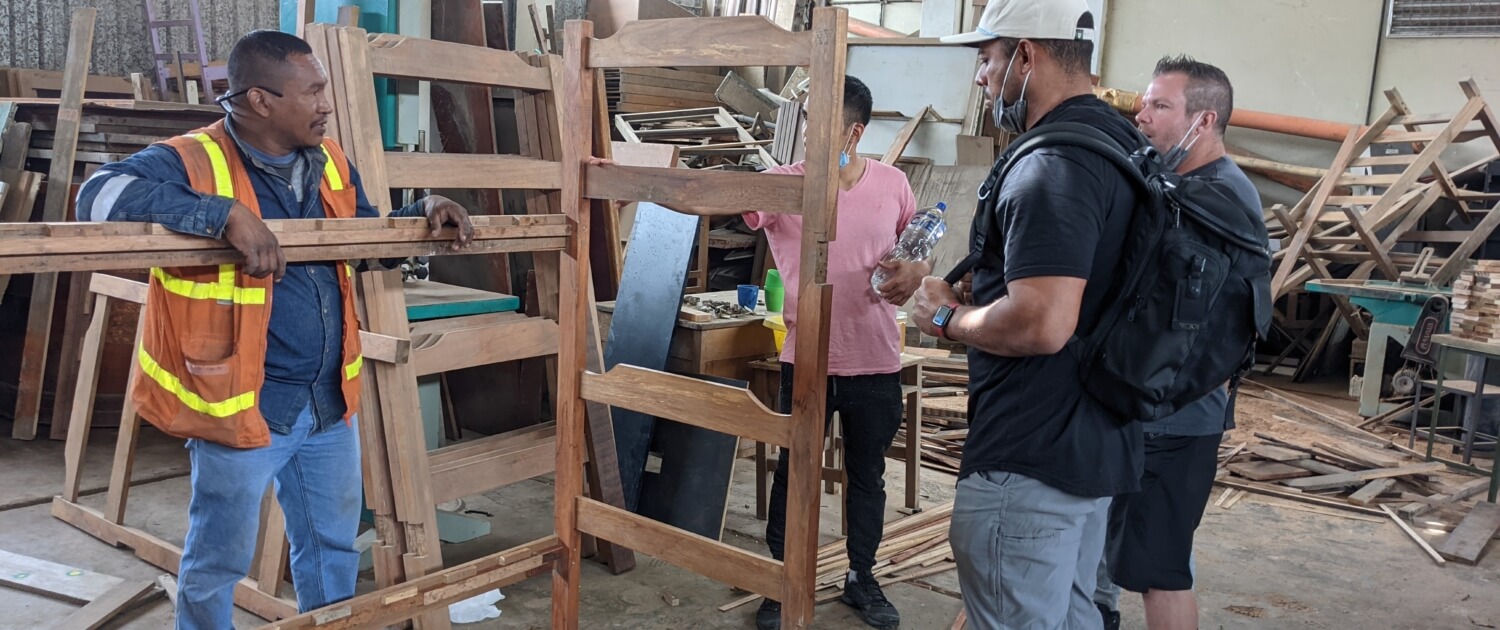
1
Story Information
2
Share
Share Link
Spread the word on your favorite platforms.
Story Statistics
2,345 Reads
80 Shares
320 Likes
Related Stories

1 year ago
The Power Behind the Reaching Children’s Potential Program: Parents!
Around the world, parents, especially mothers, play a critical role in preventing malnutrition and supporting the growth and development of their children. Before birth, mothers’ nutrition, health practices, and mental well-being impact the development of their babies in utero. In infancy and childhood, by supplying nutritious food, modeling good hygiene habits, and supporting cognitive development via play and stimulation, parents can ensure their children reach their full potential. Although the RCP program provides instrumental support and education to improve health and nutrition outcomes in the Ukwega Ward, it is a parent-driven effort – impossible without the enthusiastic participation of RCP mothers and fathers!
Supported by RCP Caregivers and volunteers, parents are the primary implementers of the RCP program components. They attend educational workshops, prepare nutritious food for their children, and use and maintain household technologies like handwashing stations, Earthboxes, chicken coops, and fuel-efficient stoves. Involvement in the RCP Program requires significant time and effort, but parents enjoy participating in the program and are enthusiastic about the positive changes they have experienced. RCP parent Inueni Ngalembula from Mkalanga village reported that she regularly participates in RCP activities like home visits, monthly weighing of her baby, preparing nutritious meals, and caring for the RCP technologies. When asked about her favorite RCP activities, Inueni said “I enjoy participating in [workshops] because I learn a lot of new things that have grown my capacity, ability, and knowledge on childcare and parenting as well.” Inueni has also seen a positive impact on her children and mentioned that nutrition education, healthcare, and technologies “…have positively impacted our ability to get vegetables from our home garden and has made it easy for us to get food…it has helped my children be in [a] good health condition.”
RCP mother Angela Ngalembula from Mkalanga feels that the RCP Program has “…enabled me as a mother…through seminars which I have been attending at the RCP Centre as well as home visits where I receive knowledge transfer from caregivers. The seminars have been so good to my family [especially] nutritional education…I did not have the knowledge before regardless of all the nutritional sources that are found within our localities and how to use them it was a challenge to me but through Global Volunteers’ education offered through workshops has [improved].” Angela’s favorite RCP activity is the monthly measurement because “…it helps me to know the progress of my children in whatever stage they are in and where to put [the most effort] to make sure they truly meet their full potential.” She also reports that educational workshops on hygiene have helped her family to be free from stomach diseases and that the practice of handwashing has had a positive impact on their life.

Jenifa Kikoti from Mkalanga regularly attends home visits, workshops, and monthly measurements and is responsible for maintaining her family’s RCP household technologies including a chicken coop, Earthboxes, and a handwashing station. Jenifa stated “I have enjoyed all RCP activities but the most enjoyable activity to me is taking care of technologies because it’s a direct impact you can see. I take care of the earth boxes by watering them. I’m enjoying the vegetables…as well as the chicken coops. I know sometime later I will be harvesting protein from chickens.” Jenfia also described the impact of the RCP Program on her children “…using the knowledge I acquire from the workshops, especially that of hand washing and hygiene to improve sanitation around my home has reduced the frequency of illness for my children…my newborn has fewer visits to the health facilities because he doesn’t have stomach illness like his [older] brothers.”
Parent participation in the RCP Program has a positive impact on children’s physical health but it also can support children’s mental development and form positive habits and emotional health. Global Volunteers’ RCP Caregiver Supervisor Thekla Mushi highlighted this important role saying, “It is important for the parents to be involved and participate in the RCP Program…both fathers and mothers can provide consistent and positive messages to their child. This can help a child to have a sense of security and support, which can accelerate the child’s overall well-being. Parents’ involvement is very important at every stage of child development for the betterment of future generations.”


Parents in the Ukwega Ward have already made incredible progress. Since the beginning of the RCP Program in 2017, stunting prevalence among RCP children has dropped from 37% at baseline to 16% – a 57% reduction in the number of stunted children. By volunteering in Tanzania or donating, you can support the RCP Program and provide RCP parents with the resources and support needed to continue the challenging but rewarding work of transforming their children’s futures.
Become a Global Volunteer in Tanzania! Request information here >>The History of the Reaching Children’s Potential Program from Anse-la-Raye to Ipalamwa

1 year ago
Help Improve Health and Hygiene for Peruvian Children
In the dusty hills of the district of Ventanilla, north of Lima, Peru, the community of Sagrada Familia houses and educates some 250 children living away from their families. During the school year, Sagrada Familia is also a school for more than 1,000 kindergarten, primary, and secondary school students from the surrounding favelas. Part of Sagrada Familia’s compact campus is a clinic that provides health care services to the resident children, students, and neighborhood families. As we introduce the Reaching Children’s Potential Program (RCP) to the wider community of Ventanilla, volunteers present health and hygiene workshops to students and families, emphasizing practical hand washing and disease prevention skills.
It’s rare in the small, remote jungle villages and Andean regions, where many of Sagrada Familia’s children were born, to find a fully equipped bathroom with running water and soap. So, when they come to live in the children’s community, they must learn the practice of hand washing. For the families living in Ventanilla, water is expensive, and available for only a few hours a day. Using both soap and water, therefore, is a habit that the children we serve must learn. Workshops are one tool we use in the standard RCP curriculum, along with classroom discussions on self-care.
Youth are naturally interested in what volunteers teach, and they pay attention to these lessons, say Sagrada Familia staff. Volunteers come across as fun, friendly, and non-judgmental, so it’s easier for the kids to open up to them and ask the questions they hesitate to bring to their teachers and peers.
The Peruvian government began a handwashing initiative in 2003 using public education and media messaging to increase handwashing among mothers and young children in 14 of the country’s 25 regions. The program got a major boost in 2007 when the World Bank’s Water and Sanitation Program and Bill & Melinda Gates Foundation added their resources and know-how through the Global Scaling Up Handwashing Project, an evidence-based program to improve handwashing behavior in real-world settings. Despite these considerable resources, limitations in delivery, commitment, and capacity led the project to fall short of expected results among the target group of mothers, caregivers, and children under 12
The World Bank found greater success with hyper-focused efforts engaging mothers at home teaching the family to wash hands with soap and water before meals, before cooking and after using the toilet. Global Volunteers has learned in Tanzania by providing convenient handwashing stations and liquid soap for every family, and presenting educational workshops to mothers on the importance of hand washing, that the incidence of diarrhea can be rapidly and significantly decreased. With our focus on the first thousand days of life, and reducing childhood stunting, such outcomes are critical for long-term program sustainability, and are transferable to our work in Ventanilla.

Basic health and hygiene workshops through Global Volunteers’ RCP Program in Peru present the importance of disease prevention and simple daily practices for optimal health. For instance, diarrhea can be reduced by nearly 50 percent and acute respiratory illness reduced by 25 percent through hand washing with soap and water after using the toilet and before eating. This simple practice is, in fact, the most efficient and effective preventative health measure readily available to virtually everyone. From a cost-benefit perspective, washing with soap is three times more effective than building latrines, nearly 60 times as effective as providing clean running water, and more than 300 times as effective as any single immunization.
Students and professionals alike are effective in teaching these basic lessons through Global Volunteers’ prepared health and hygiene workshops in classroom settings. Youth and adults gather for interactive workshops, translated into Spanish, with youth and adults. Volunteers serve as a valuable resource in reinforcing the Peruvian government’s campaign for clean hands, sharing personal and professional knowledge of personal hygiene practices, and answering important questions about integrating good health habits into daily life.
More broadly, we make healthcare volunteers available to discuss health concerns such as anemia, diabetes, and breast cancer of families living in the surrounding neighborhoods. So, instructions on healthy eating habits, stress management, diabetes prevention, and breast self-exams are requested as part of education and treatment of these conditions. Workshops can help prevent and identify various conditions, saving impoverished families the cost of doctor visits and medicine.
Volunteer Coordinators can register you and your traveling companions on a one- or two-week Peru RCP service program to assist with this life-saving project.
Request information to learn more >>Learn more about hand washing here:
Proper Hand Washing Saves Lives Worldwide – How You Can Help

1 year ago
“There’s No Way to Describe the Joy”
The faded and peeling murals and empty classrooms at Sagrada Familia bear witness to the punishing lockdown during the pandemic. But the children’s cheery demeanor and spring blooms on trees and stems belie the stress of 19 continuous months of isolation. On the first service program back to the children’s home in Ventanilla, Peru, Global Volunteers team members experienced a mix of emotions: relief, to be sure, at seeing the resident children’s healthy smiles. But also gratitude for the welcome into a safe sanctuary, dismay for the absence of more than 1,000 impoverished day students who languish at home, and trepidation knowing the struggles still aren’t over for the frazzled staff. We take a look at the ebullience in the teamwork of volunteers and students, each day concentrating efforts to brighten up neglected exteriors, equipping dusty classrooms, stimulating young minds, and anticipating better days ahead.
Washington retiree and seven-time Global Volunteer Suzanne Popp has prepared an impromptu art class for second- and third-year high school students only to discover the children coming in the door appear to be several years younger. With a knowing shrug prompted by a week of changing schedules and last-minute surprises, she squints and asks: “What would you like to paint today?”
Nurturing her creative instincts after a full career in sales, Suzanne is eager to share her excitement for watercolor washes, palette progressions and elegant silver leaf prints – art expressing inward longing and outward promise.
Girls and boys press around her, careful not to intrude on each other, but eager to accept a sheet of paper and a makeshift roller with which to press their leaves into leftover latex paint purchased for a labor project the day before. Instantly, three girls from yesterday’s class rush through the door to greet la profesora. “We missed you,” they giggle.

“There’s no way to describe the joy of having children running up to you and hugging you,” Suzanne affirms. “They’re so grateful to have us working with them.” As she instructs them to draw a free-form tree to paint and spray with a water-alcohol mix, she stops to answer a question shyly asked by a young boy in English fragments. She replies with a mix of equally fragmented Spanish and English. “It takes a lot of courage to use their English skills,” she asserts. “But, they’re trying, and it’s really impressive how hard they work at it.”
“There’s no way to describe the joy of having children running up to you and hugging you.”
Peru Volunteer Suzanne Popp
Through the open windows of a nearby classroom, young voices explode in harmony first in English, then Spanish, ending in screams of delight. “Very good, getting better. Let’s try it again and this time, let’s sing in very quiet voices,” says six-time Global Volunteer Kurt Jaeger, and hometown choir director. Three days are left to practice the song for the community farewell celebration honoring the team’s work together with the children. Kurt fits these rehearsals in between labor assignments – painting chairs, desks and walls – and the students’ class schedules. Music, he knows, bridges language gaps, transcends inequities and weaves a unifying thread throughout the two weeks of service.

“I see this community as a source of goodness in the world,” Kurt says simply. “Miguel and the people who work with Miguel are teaching these kids how to be good human beings; how to be productive, caring and loving. He’s making the world a better place… by instilling those values in the children.” That’s why he returned as soon as the program resumption was announced. “Our role is to help make that happen. I see my role as providing skills and resources they don’t have. For instance, there’s no one here to lead a choir, so when I’m here, I can do that to help broaden the children’s experience.”
“I see this community as a source of goodness in the world.”
Peru Volunteer Kurt Jaeger
Outside the metal shop, desk frames are lined up along a retaining wall where girls and boys as young as 5 and as old as 17 share brushes and soda-bottle paint cups of primer and top coat. They position themselves atop narrow strips of cardboard intended to catch paint drips, but as more kids arrive, the careful organization dissolves into a haphazard swarm of happy “worker bees” surrounding the volunteers buzzing with Spanish and English conversation.
“It’s remarkable how these kids work together – the older ones helping the younger ones, patiently filling paint cups – and finding chairs for volunteers to sit on,” noted first-time volunteer, Las Vegas sales director Mel Shingleton.

Mel’s childhood friend, two-time Peru Volunteer Casey Brooksby brought his 14-year-old son Boston with him to Sagrada Familia, hoping to share the inspiration of harmony and hope he found here just three years before. The pandemic delayed his planned return. “I was ready to come back as soon as the program reopened,” Casey asserted. “This is where I knew I wanted to bring Boston.” In his youth, Casey fulfilled his mission with the Mormon Church in Peru and found Global Volunteers’ work in the children’s community most closely matched his devotion to service. “I love the people of Peru and have kept in touch with many friends and the family I lived with,” he continued. “I have, over the years, felt very strongly that I needed to return and help where I can.”
“I needed to help where I can.”
Peru Volunteer Casey Brooksby
Casey and Boston leapt into action the first day onsite with Mel and four volunteers wielding scrapers, rollers, brushes and gallons of paint to restore a building facade with a dozen resident teens. The second day found them building bunk beds in the carpentry shop, and by the third day, they were outnumbered by throngs of children at the metal shop where newly constructed desks and chairs were being primed and painted. It was the dominant project for the rest of the week – with a new shift of students arriving each morning and afternoon to work with the volunteers.


“It’s nice to be around people who are generous and caring, who genuinely love and help others. It’s inspiring and beautiful,” says Mel. “The tasks at the school have been pretty simple but fun and interactive. I have not seen one child complain about the work. Each one is eager to jump in and help.”
In the kitchen, Global Volunteers Nick Philbrook and Suzanne’s husband Ken are robustly chopping vegetables for the lunch meal for more than 200 students, staff, and volunteers.

“Each day has been very different in many ways, but one thing is always constant, and that’s the children’s welcome to us,” Nick says. “For instance, today when we arrived, they were practicing a national dance on the soccer field. They immediately invited us in to dance with them – patiently instructing us and encouraging us to follow their lead.”
“Each day has been special in its own way and taught me something new,” Mel added. “Today it was gratitude. Not gratitude for what I have or blessed with temporally. But gratitude for this earthly experience and means to be here and to give of my time, energy, and spirit. Gratitude for the energy and spirit of these children of our Heavenly Father. And the bright smiles and love they each share. I love the quote by Jeffrey R. Holland: ‘Don’t wait to live, this isn’t a rehearsal. This isn’t a dry run, this isn’t a pre-performance routine. This is it. This is real life. Don’t wait, savor every minute.’ Well, today we lived!”
Request information >>Children’s Community in Peru Looks Beyond The Pandemic